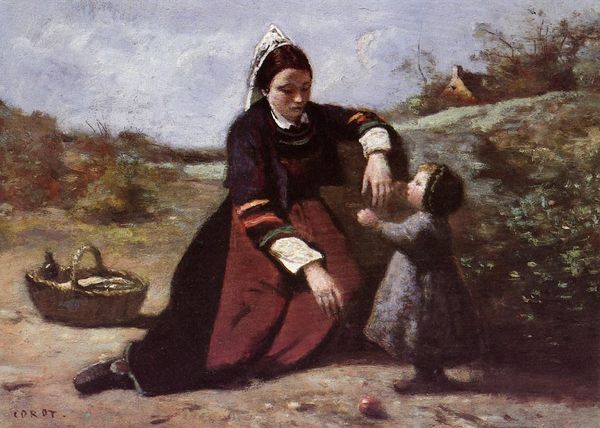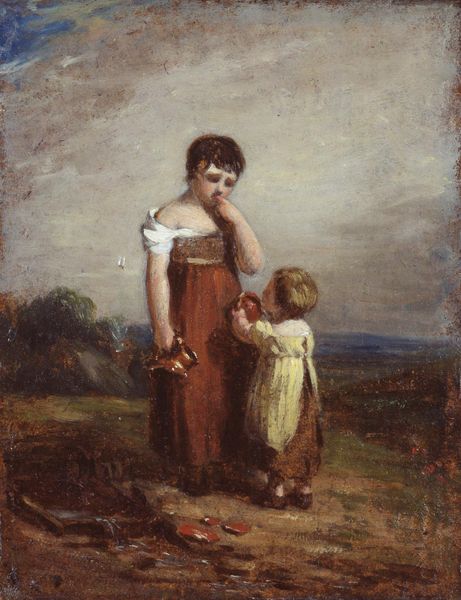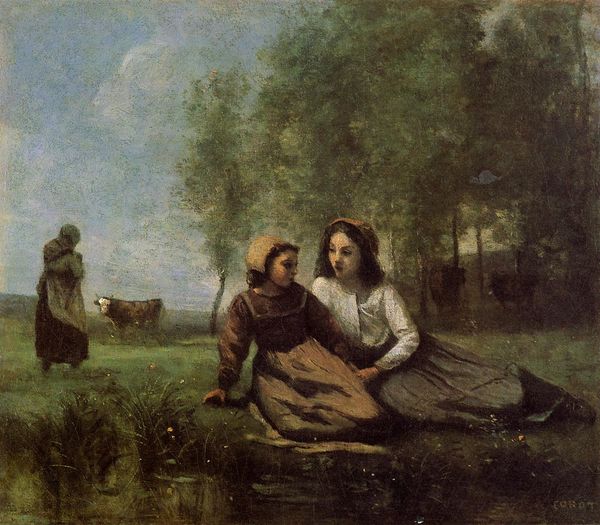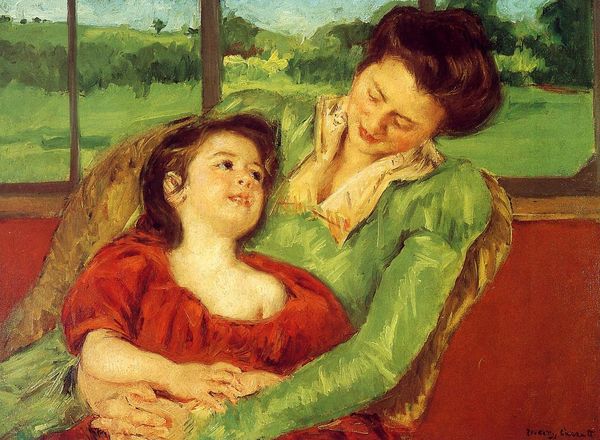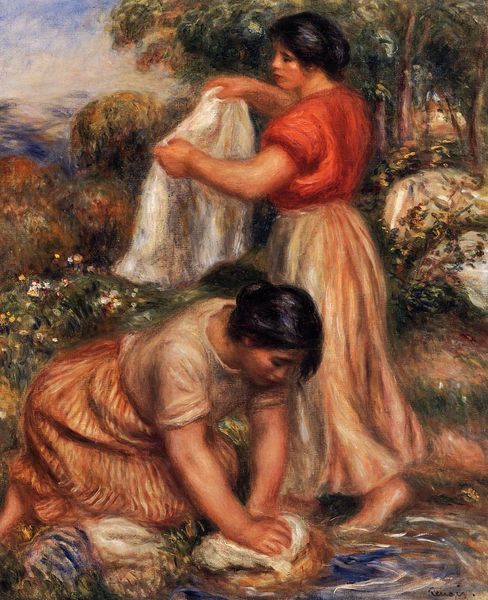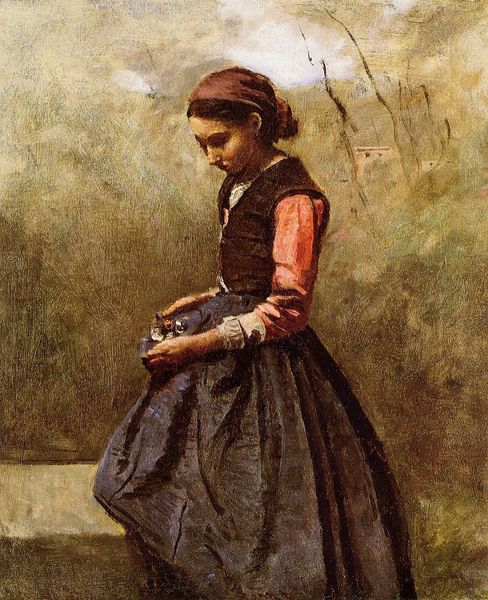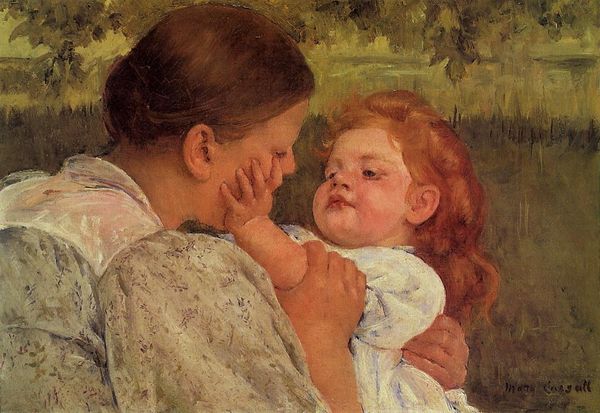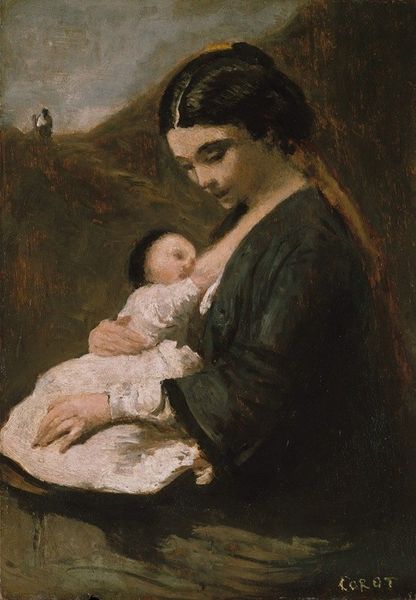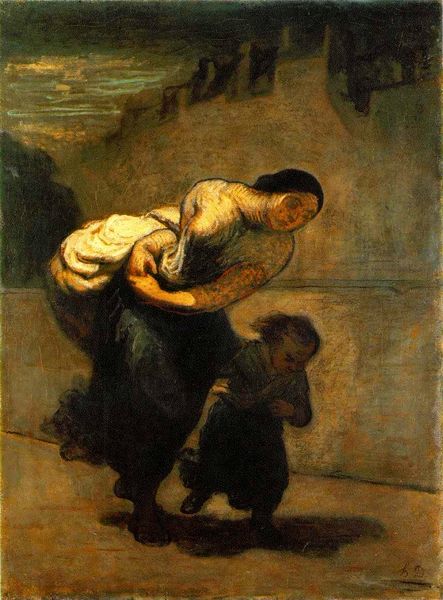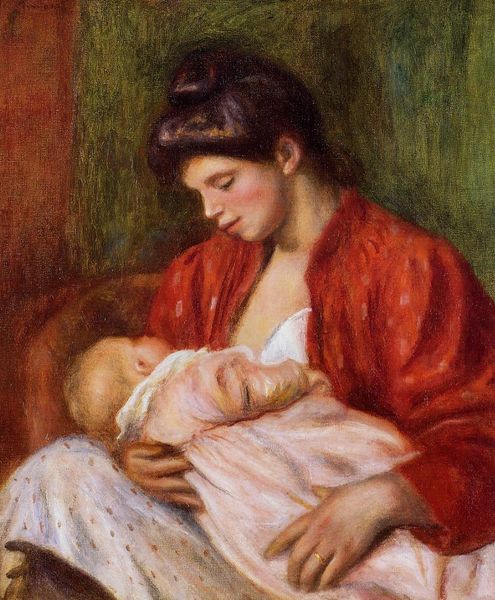
Mother and Child on the Beach 1860
0:00
0:00
jeanbaptistecamillecorot
Philadelphia Museum of Art, Philadelphia, PA, US
Copyright: Public domain
Editor: Here we have Corot's "Mother and Child on the Beach," painted around 1860, rendered with oil paints. The overall feeling is intimate; a snapshot of a domestic scene by the sea. How do you interpret this work, especially considering Corot's reputation for landscapes? Curator: This painting offers a window into the evolving role of genre painting in the mid-19th century. It reflects the rising importance of bourgeois values and the idealized image of motherhood. While Corot is renowned for his landscapes, his genre scenes provide insights into how social values influenced artistic choices. It is important to consider how depictions of motherhood changed with industrialization and urbanization. Notice how Corot frames the figures, almost isolating them within the broader landscape, emphasizing their personal relationship, rather than societal interactions. Don’t you think the brushwork also contributes to the personal feeling of the painting? Editor: Absolutely, the soft, almost hazy brushstrokes really contribute to that sense of intimacy. It feels very different from, say, a grand history painting, aiming to be very accessible. It also makes me consider the place of women and their relationship to landscape art at the time. Curator: Precisely. It is fascinating to analyze the institutional mechanisms, such as art academies and salons, that either promoted or suppressed depictions of women and their societal roles. Art became an active participant in shaping society’s understanding of gender and domesticity. How did Corot balance these public expectations with his artistic expression? Editor: That’s a fascinating point; seeing it as a dialogue between public expectation and artistic intention gives me so much more to think about. Thank you. Curator: My pleasure. Art invites us to explore those questions.
Comments
No comments
Be the first to comment and join the conversation on the ultimate creative platform.
